Summer Jammings
“We all go Do, Re, Mi, but you've gotta find all the other notes yourself.”― Louis Armstrong
It has been a crazed summer of trips, of family, of distractions both glorious and road weary, and thus the publication of this newsletter has been slowed. Those late night quiet moments that offer the usual opportunities to write have been filled with kids games and Mystery Science Theater 3000 family viewings, while the morning’s ever changing schedules also prevent the rhythm of digital pen and ink. Three more weeks and school starts again, and with it back to a semblance of balance, getting back to the writing regiment. For you wonderful paid subscribers of The Signal, I am putting the finishing touches on a playlist, focusing mostly on favorite recordings that have for some reason not made the leap to streaming services (even with Qobuz’s wonderful ambitions to bring forth catalogs that have up until now missed the boat).
While I am working on a bigger piece, here are some ramblings…
~~~~~
I have always wondered how the term “Jamming” came to be, the act of musicians coming together and playing a song that includes moments of collective improvisation, sometime feeding off a tune’s melody and rhythm, sometime breaking free. A jam (noun), to jam (verb), a jam (adjective) band (noun). I was recently reading Hear Me Talking To Ya, an oral history of Jazz put together by Nat Shapiro and Nat Hentoff when I came upon this quote from Mezz Mezzrow:
There was a ginmill that became the hangout for all of Chicago’s
hot men. The address was 222 North State Street, and after we
hung out there awhile we named it the Three Deuces, parodying
the name of the Four Deuces, one of the biggest syndicate whore-
houses in town. Whenever we musicians wanted to get together
with each other we’d say “Meet you at The Deuces tonight.”
Years later, after Prohibition was repealed, the name was officially
adopted and hung up on a sign outside, and the spot turned into
a legit hot-music center.
I think the term “jam session” originated right in that cellar.
Long before that, of course, the colored boys used to get together and play for kicks, but those were mostly private sessions,
strictly for professional musicians, and the idea was usually to
try and cut each other, each one trying to outdo the others and
prove himself best. These impromptu concerts of theirs were
generally known as “cuttin’ contests.” Our idea, when we got
going at The Deuces, was to play together, to make our improvisation really collective, using an organ background behind the one
taking a solo, to see could we fit together and arrive at a climax all at once. Down in that basement concert hall, somebody was
always yelling over at me, “Hey, Jelly, what you gonna do?” —
they gave me that nickname, or sometimes called me Roll, because
I always wanted to play Clarence Williams* classic. Jelly Roll —
and almost every* time I’d cap them with, “Jelly’s gonna jam some
now,” just as a kind of play on words. We always used the word
“session” a lot, and I think the expression “jam session” grew up
out of this playful yelling back and forth. At least I don’t rightly
remember ever hearing it before those sessions at The Deuces. Celebrating the Fantastic Filth of San Francisco Punk in the ’70s and ’80s
I missed the opening of this show, as well as initially missing the heart of this music scene by about 8 years. The San Francisco punk movement was like no other…filthy to quote the title of this article, more ramshackle and stitched together than the ones in Los Angeles or New York. Many of the musicians were older. There was an art-damaged veneer specific to the San Francisco region, during a time when artists inhabited the Victorian houses of the city, during a time when burnt out neighborhoods gave opportunities for magical creation. While many of the bands never made it out of the Bay Area (photos I have seen from the show feature fliers for bands I have never heard of), the ones that did: The Dead Kennedys, The Avengers, Crime and Flipper were some of the greatest punk rock bands ever…playing alongside the more “alternative” sounds of Tuxedomoon, The Residents and The Mutants.
I recently saw the Avengers play with the Damned at the Regency Ballroom. Penelope Houston’s voice was so strong, still trenchantly eviscerating lyrics she has been singing for decades, songs that still hit hard like The American In Me and their anthem We Are The One. Hector Penalosa is the current Avengers bass player, who was part of The Zeros, one of the first punk bands coming out of Southern California, as well as a member of Flying Color, one of the best bands to come out of the paisley/jangle mid-80s San Francisco scene. I met Penelope at Hector’s house at 735 Webster Street in 1987. At the time I was interning at CD Presents, the punk rock label that released the Avengers record back in the day. The label had just reissued it. part of my job was getting it to college radio stations so they could promote it. My naive, enthusiastic seventeen-year-old self walked up to Penelope to say that I worked for the label. She responded with a forceful push, almost knocking me down, saying, “You owe me ten thousand dollars motherfucker.”
That was my first lesson that record labels sometimes were not honest when working with artists. I would later learn about the grizzly reputation of CD Presents and its owner David Ferguson (who I only met briefly once, when he came into the warehouse as I was sweeping up). Penelope and I have woven a nice acquaintanceship over the years, bumping into each other while she was an artist on Reprise, and then seeing each other around San Francisco. I think she realized at one point…that I was just an ignorant young intern when at CD Presents!
The Avengers first record does not seem to be currently on streaming services. Here are classic recordings of We Are The One, The American In Me, Thin White Line, and their killer cover of Paint It Black (UPDATE: the first record IS on streaming services, and there appears to be multiple Avengers pages. Hear it on Spotify, Qobuz). One listen to each track and you will understand why The Avengers were (and are) one of the most iconic punk bands to come out of the 70s. Penelope is also a painter, who recently showed some of her incredible work at fellow ex-San Francisco scenester Russ Tolman’s Mad.Kat Gallery in Palm Springs.
‘Down on the Corner’ Book Tells the Story of Busking & Street Music
Another newer Palm Springs resident and dear friend Cary Baker has been busy mutating from long storied PR kingpin to writer, releasing his first book in November. It is alllll about busking. You know….the fine art of the street musician. Bukka White on Beale Street. The Violent Femmes on the sidewalks of Milwaukee, Doo Rag outside of every club they ever played at. We will be looking more at this book as it comes towards its release…and very very very excited about it. Oh yeah.
Preferred sculpture chosen for Horsham's Shelley Memorial Project
Today would be Percy Shelley’s 232nd birthday, and it seems that he is getting a great gift in the guise of a sculpture for the Shelley memorial in his home town of Horsham. Vincent Gray, the chosen sculptor for the project, has also done one on John Keats. Maybe he is working his way through the romantic poets. Not a bad ambition.
Remembering Norman Mailer and His Thorny Legacy
I recently watched the new documentary on Norman Mailer by director Jeff Zimbalist, and it is really a beautiful feet, capturing the truly complex author, in all of his grandeur, while leaving out none of the darkness. It is also a reminder at how authors and their books were (and somewhat still are) such a vital and powerful part of our culture, our lives…when their voice proves the power of the pen to the sword.
Marcel Breuer’s Modernist Cottage in Cape Cod Sold to Trust, Clearing the Way for Renovations
Breuer started building the house in 1948, designing it to look “like a camera on a tripod” suspended in the surrounding landscape. “It’s a brilliant building and a prototype of Breuer’s vision of how he could marry the ethos of the Bauhaus with the traditions of the American summer cottage,” the Breuer expert Barry Bergdoll told The Art Newspaper last year. “It’s a type he repeated for a number of his friends, forming an informal colony in the woods of Wellfleet.”
Du Bois and the Paris Exposition of 1900: Three Pictures
From the archives of the Library of Congress: At The Paris Exposition of 1900 there was a “display, composed of hundreds of photographs, charts, books, maps and diagrams, was organized by W.E.B. Du Bois, the writer, activist and sociologist; Thomas Calloway, a lawyer and activist; and Daniel A.P. Murray, an assistant librarian at the Library of Congress. They wanted to show the world — or at least the international visitors to the fair — that three decades and change after gaining their freedom, Black Americans were making vast intellectual and social gains.” This article shows three of these photographs, but they are all accessible.
Soledad
By: Robert Hayden
(And I, I am no longer of that world)
Naked, he lies in the blinded room
chainsmoking, cradled by drugs, by jazz
as never by any lover's cradling flesh.
Miles Davis coolly blows for him:
O pena negra, sensual Flamenco blues;
the red clay foxfire voice of Lady Day
(lady of the pure black magnolias)
sobsings her sorrow and loss and fare you well,
dryweeps the pain his treacherous jailers
have released him from for a while.
His fears and his unfinished self
await him down in the anywhere streets.
He hides on the dark side of the moon,
takes refuge in a stained-glass cell,
flies to a clockless country of crystal.
Only the ghost of Lady Day knows where
he is. Only the music. And he swings
oh swings: beyond complete immortal now.
Photographer Sefton Samuels passed away a little over a week ago, on July 26th, at the age of 93. One of Englands foremost photojournalists, and father to my friend Tim Samuels, Samuels was known for recording the sights of an ever-changing England during his long life. Some of his favorite subjects were jazz musicians, which he would snap at the clubs he would often attend (he was also a drummer). The following are just a few of his photographs. To see more and to read about him, his website is beautifully put together. May his memory be a blessing.




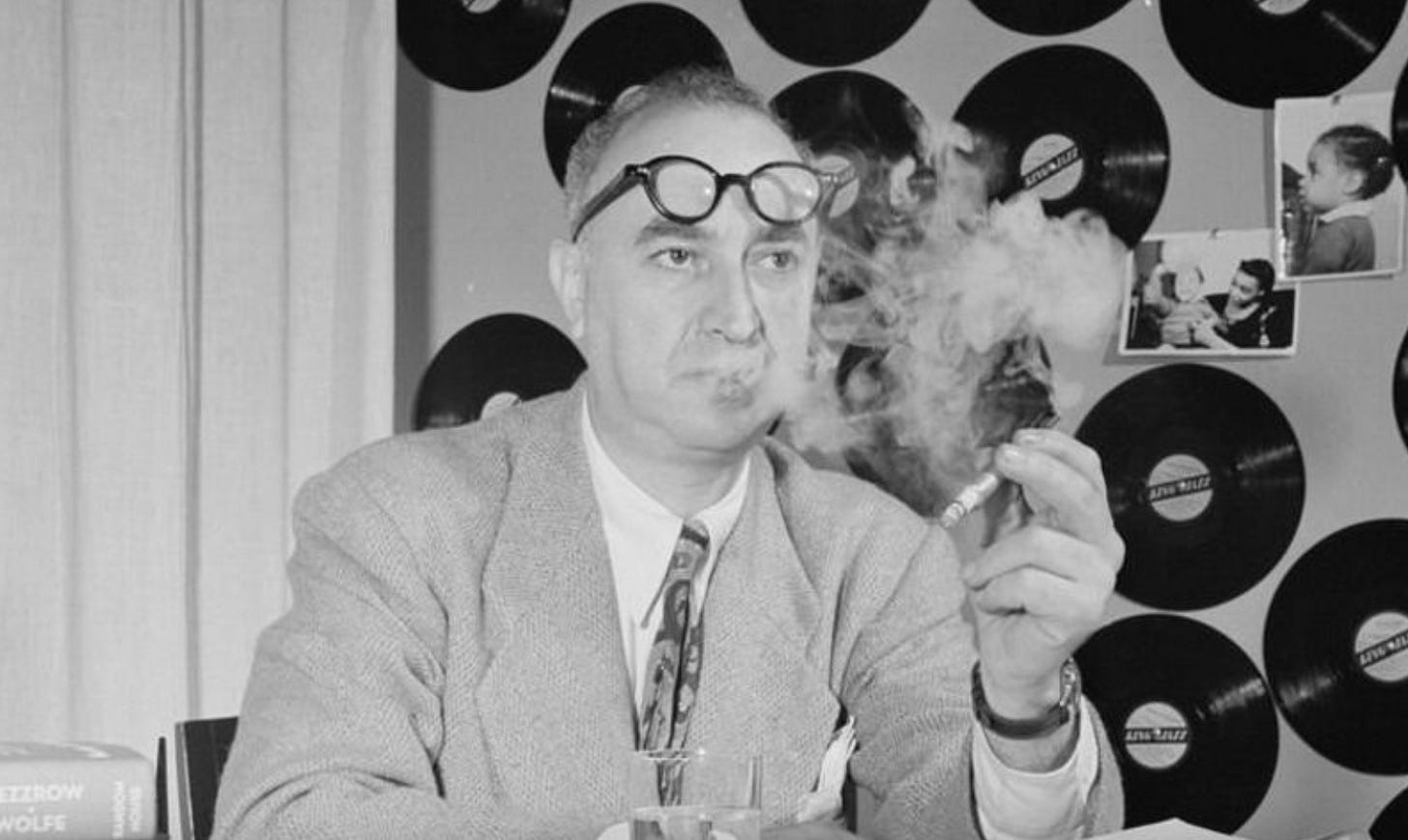




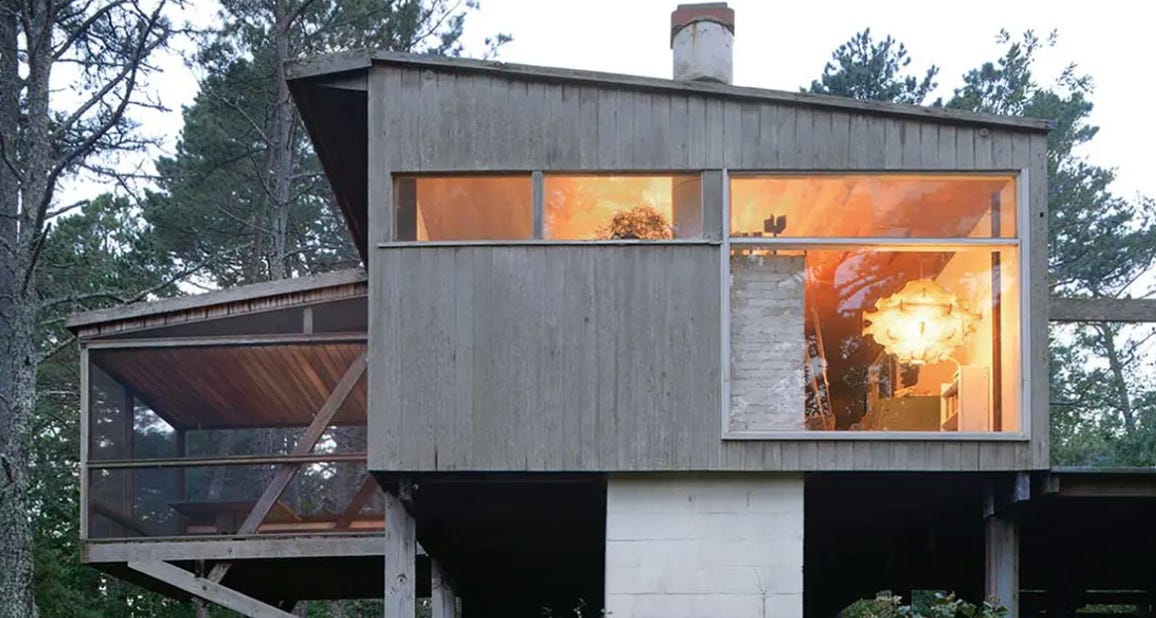
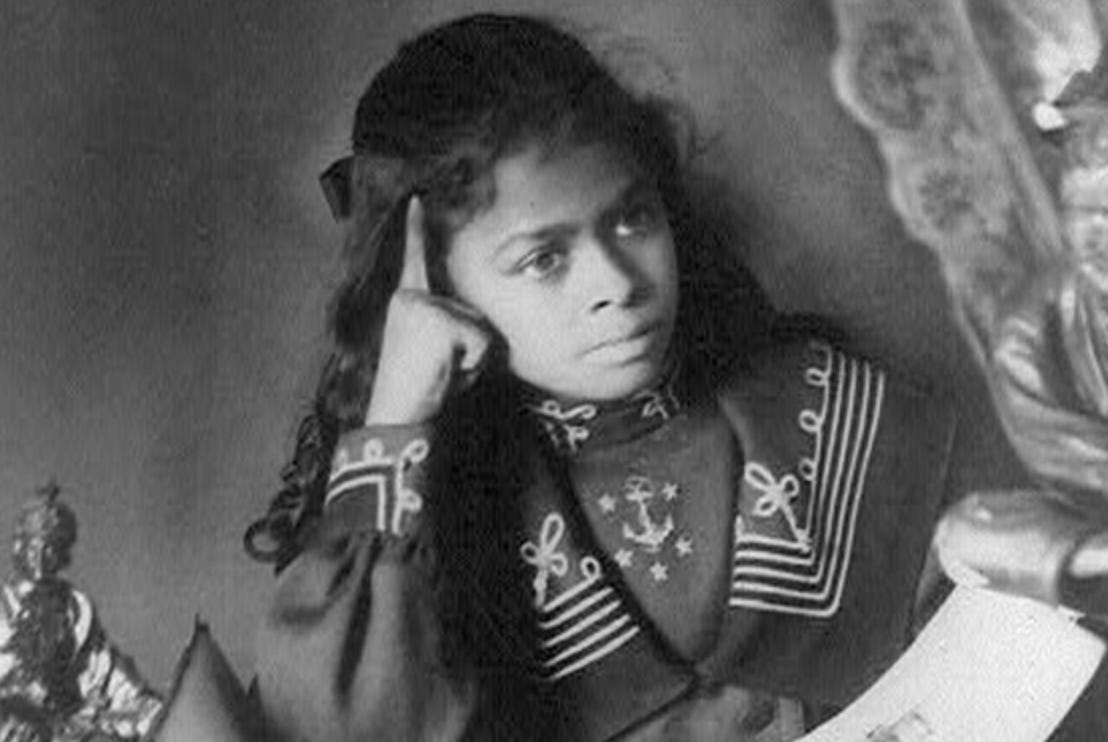



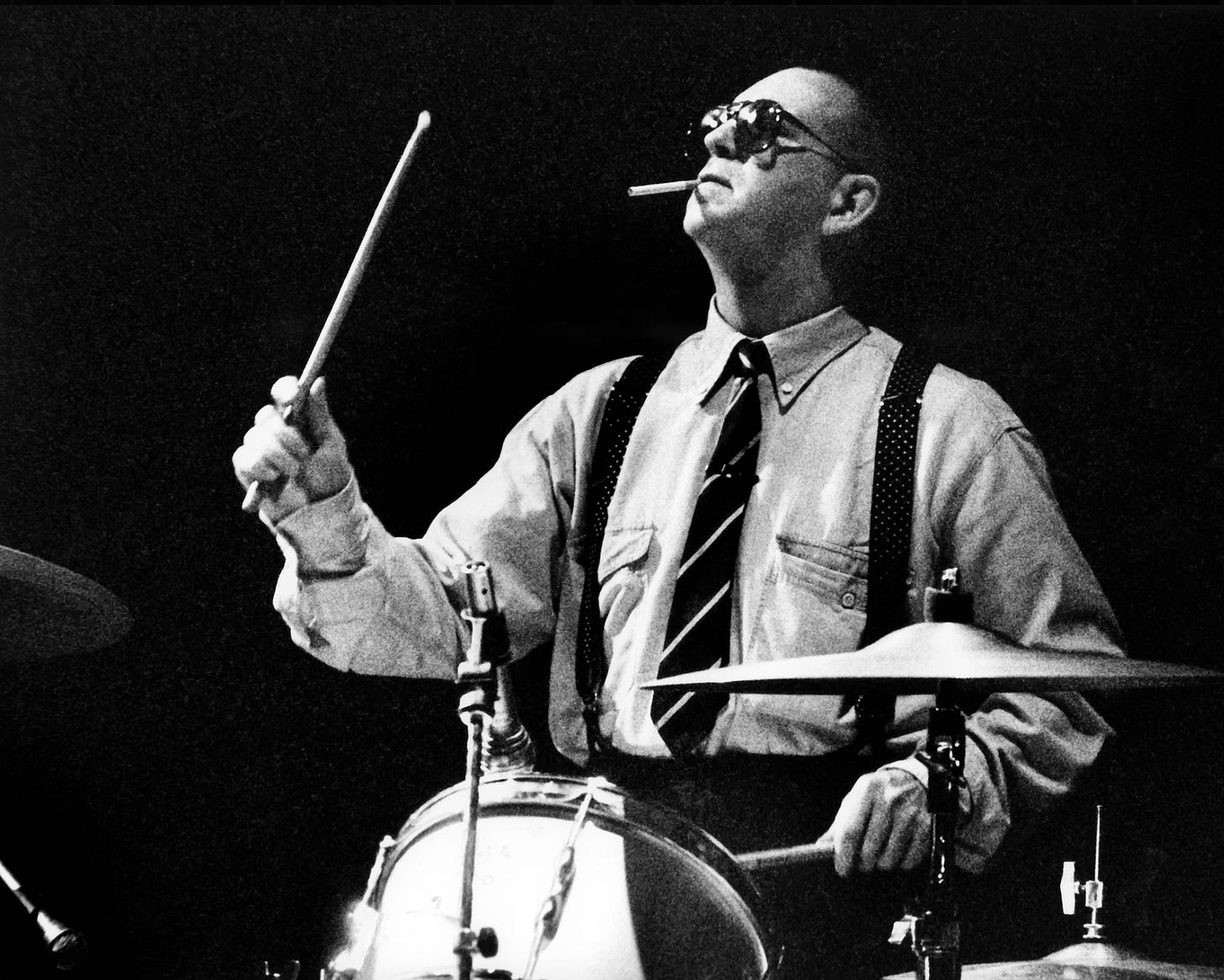

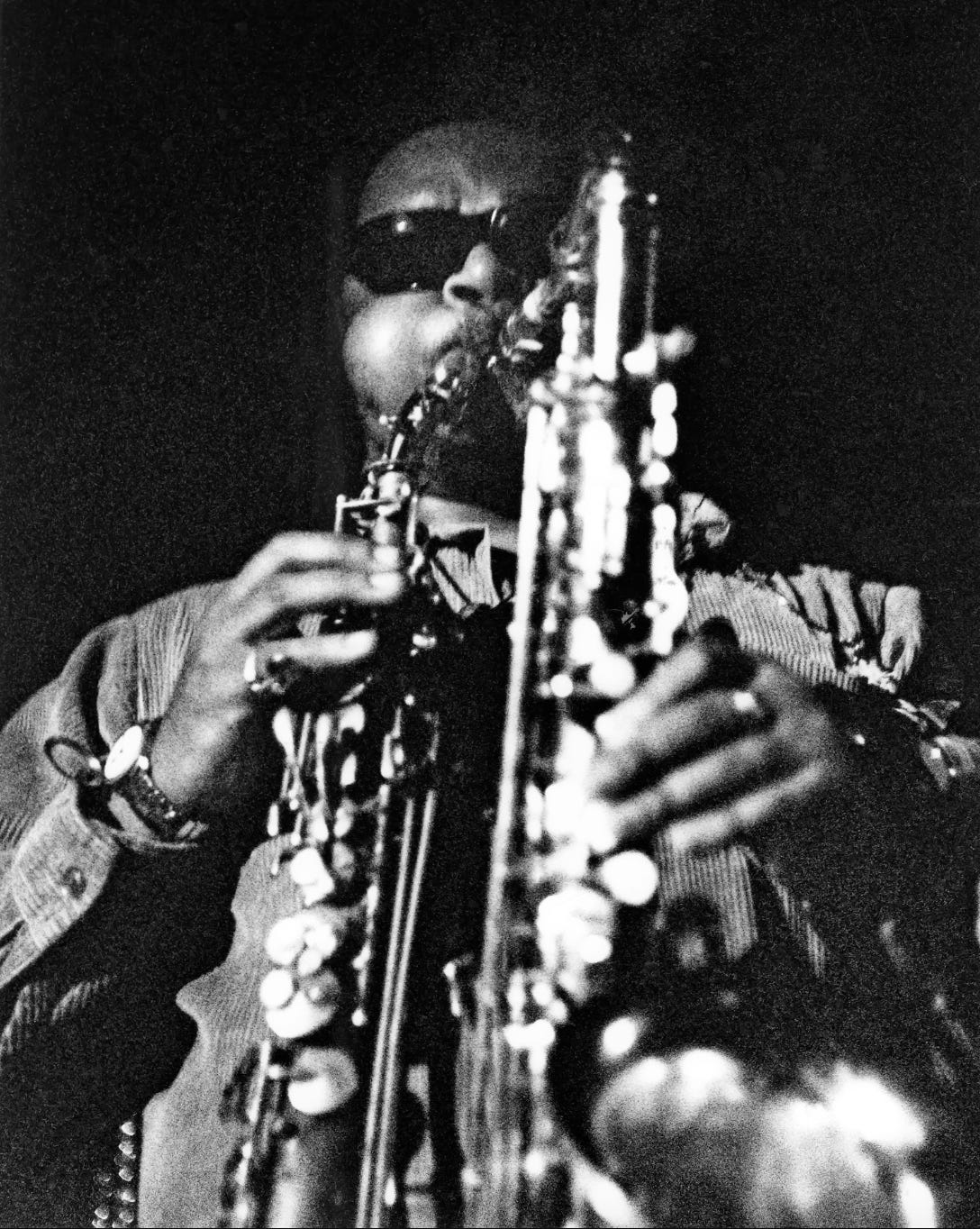
It's no problem to wait when you come up with great stuff as you always do. I forgot to comment on the Miller/Moby Grape piece, super to see an underrated guitarist get some love! Some incredible images and pieces in this post too!
Mezzrow’s autobiography “ Really the Blues” is a fabulous read.